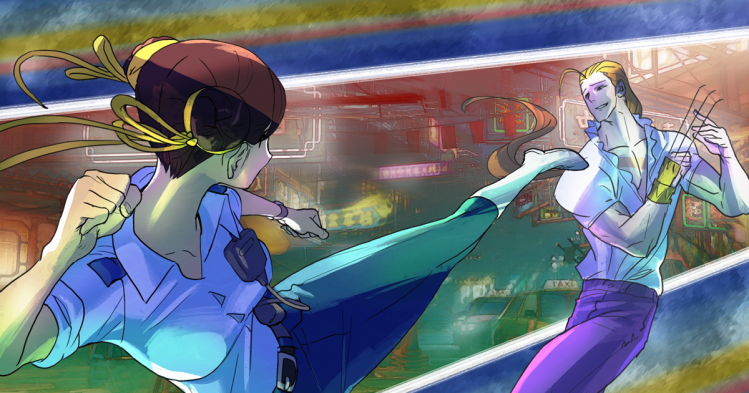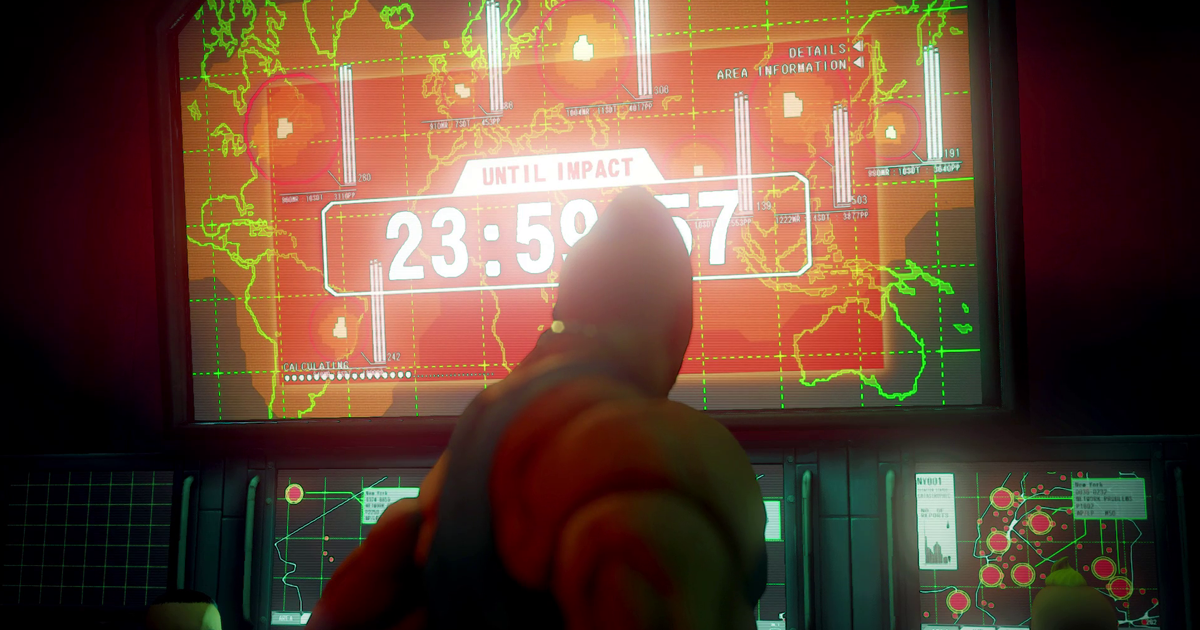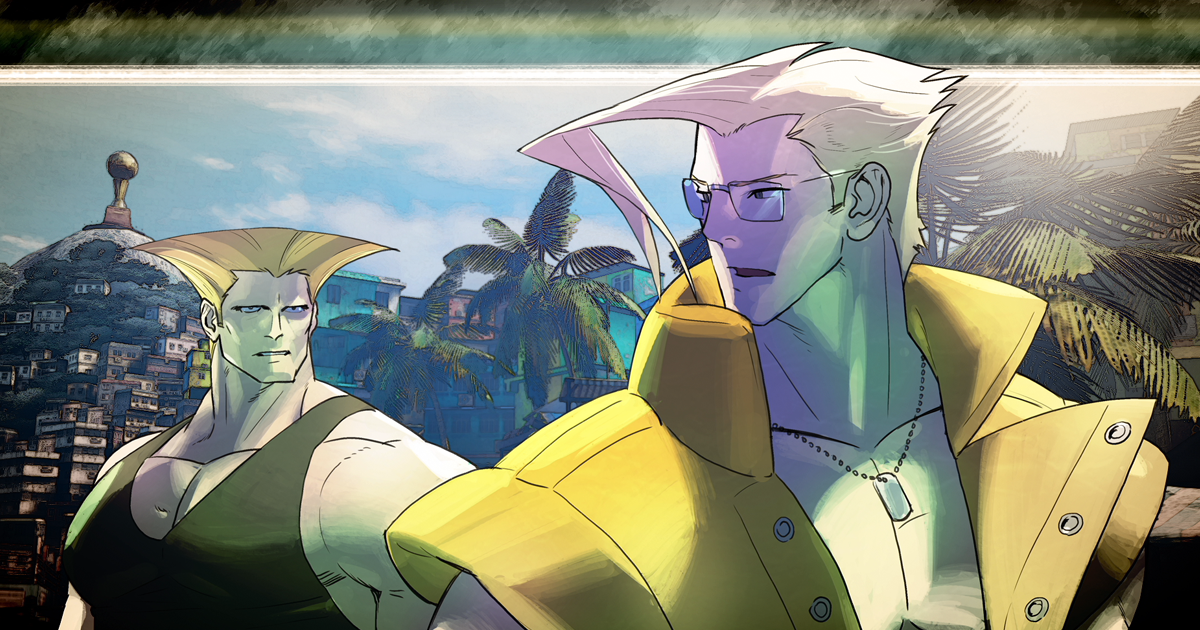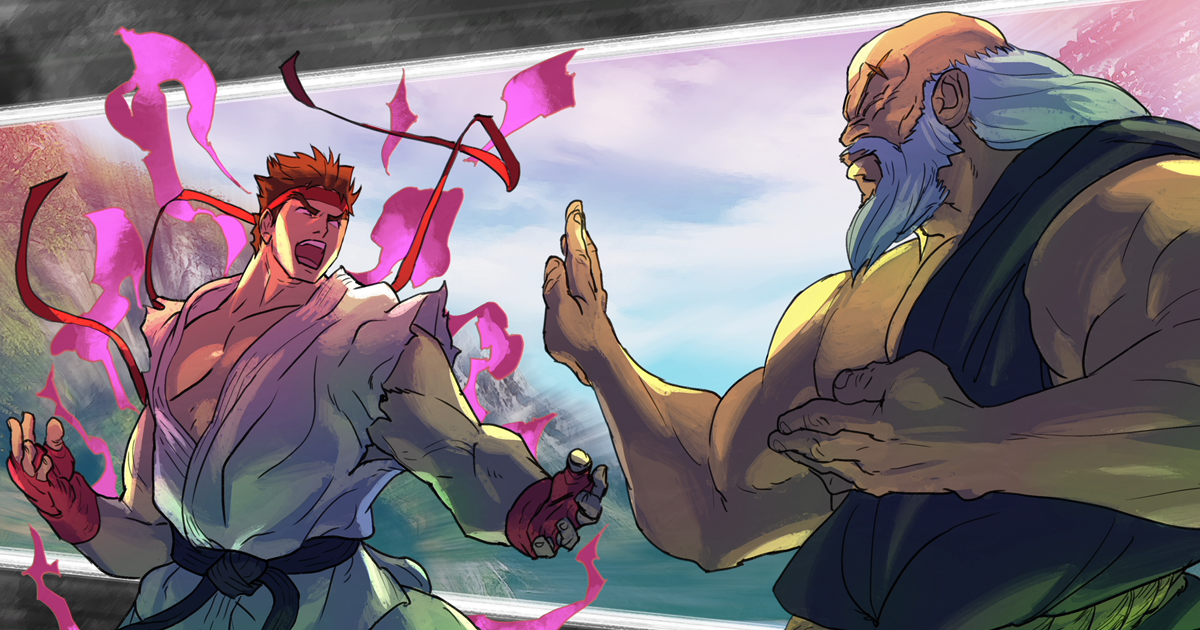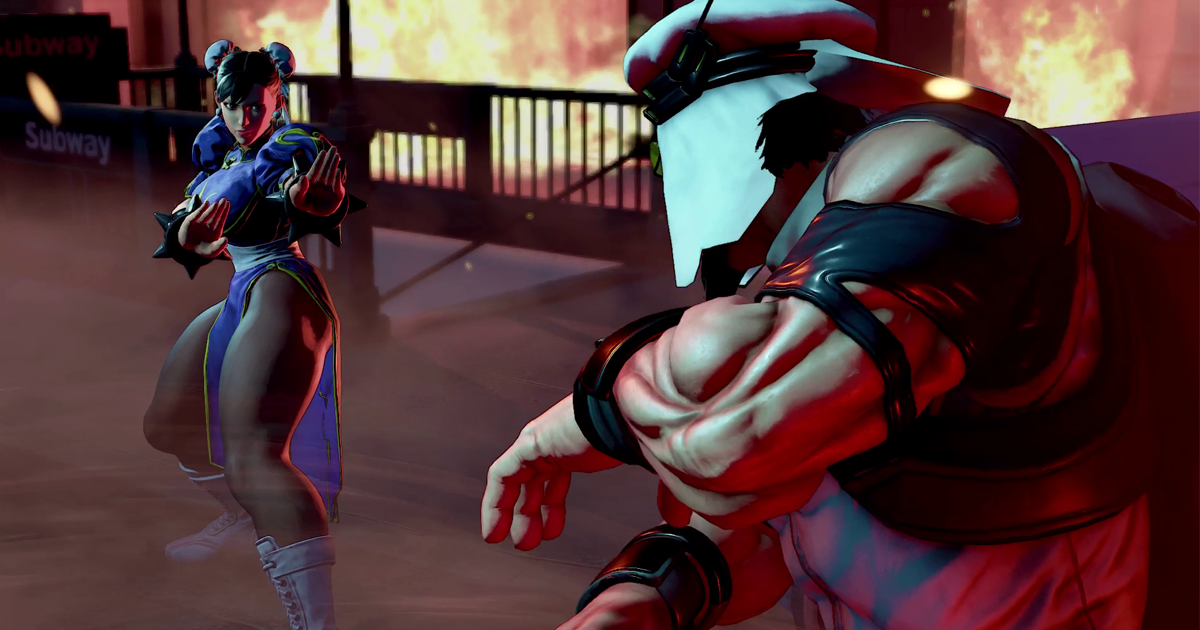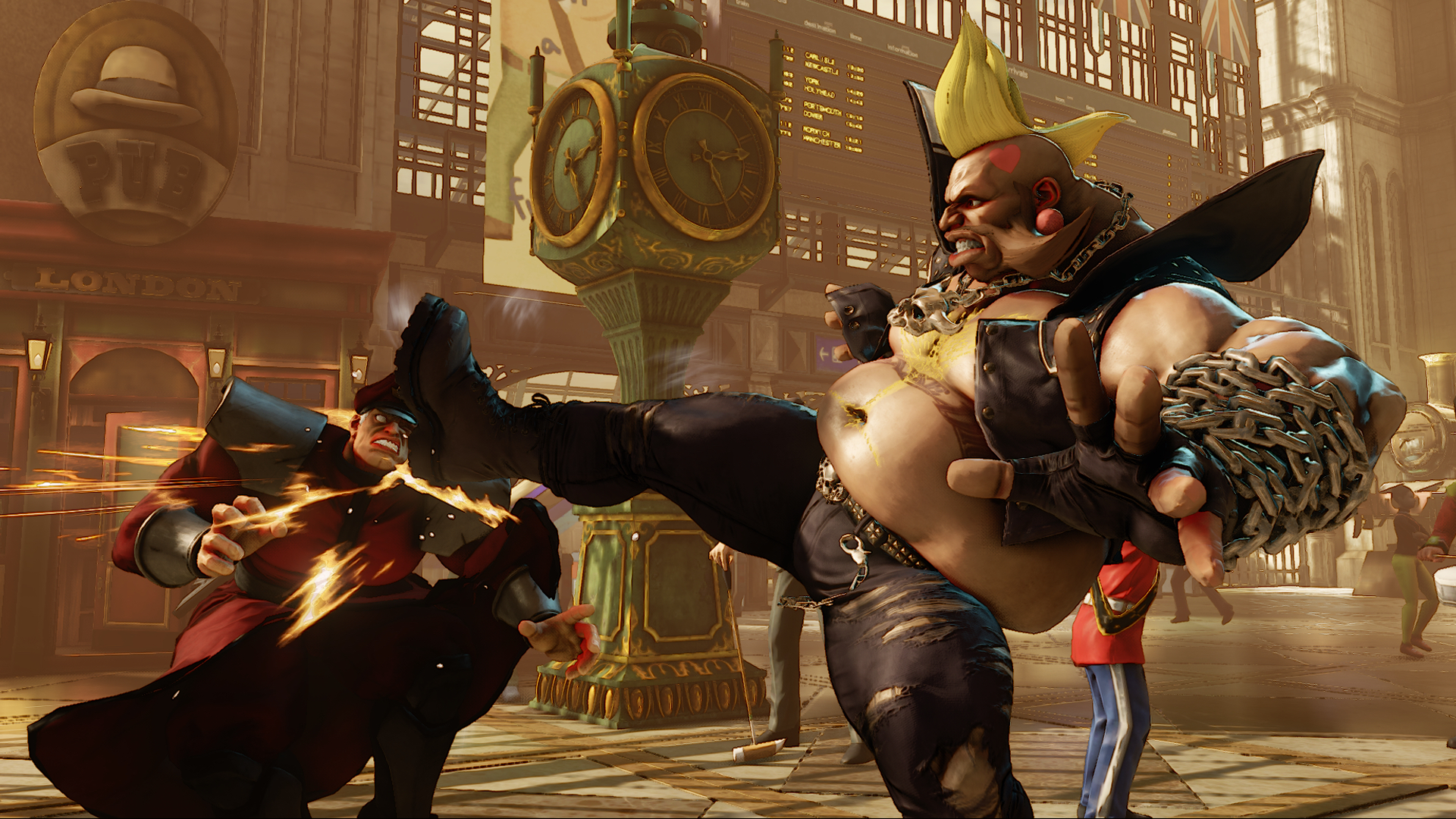Game design is full of creative people who apply chunks of themselves into their work. A game’s structure can say as much about what a developer values, as much as how a film is edited says something about the film maker.
When it comes to Yoshinori Ono, I’m afraid some of his design values tend to conflict with my own.
Yoshinori Ono is the lead on Street Fighter V, which is the seventh major release of Capcom’s esports title. The last major release being Street Fighter IV, which has had a seven year run of support from the company in the form of updates and an official league-style tournament called the Capcom Cup.
Going 3 Rounds with Street Fighter V
- Round 1: Yoshinori One has more energy than a Ryu fireball.
- Round 2: Yoshinori Ono takes on monetization.
Ono’s design philosophy during IV was sometimes controversial, and as I mentioned, was at times counter to what I, a long time Street Fighter player, value out of the series’ play design. One major example was Ono’s love for the comeback mechanic. A design element that allows a player to execute one big move in order to, well, make a ‘comeback’. I hate these in fighting games, and I think the Ultra meter in the Street Fighter IV series is one of the worst offenders. Ono is a huge fan of the idea. He thinks bad players should have tools to even the playfield against good players. It’s a suggestion that tends to elicit a shocked-horror reaction out of me.
I finally got a chance to touch on some of Ono’s design philosophies, briefly, toward the end of our conversation on Street Fighter V — and perhaps get his perspective on how the development teams’ ideas may have evolved from Street Fighter IV to Street Fighter V.
GamesBeat: We’ve been discussing Street Fighter V, but let’s step back to Street Fighter IV for a moment. Did you and your team feel like you accomplished everything you wanted to by Ultra Street Fighter IV?
Yoshinori Ono: We believe we totally accomplished what we wanted to do with Street Fighter IV, and beyond that.
The reason I say that is, right around the time of Super Street Fighter IV Arcade Edition 2012, we were thinking about how this was pretty much going to be the last one. Then we ended up releasing Ultra Street Fighter IV.
Whoops!
[Everyone laughs]
Ono: Maybe we’re a little bit guilty there, maybe we didn’t have enough foresight. But throughout the entirety of the Street Fighter IV series, we felt like we did an awesome job of collecting fan feedback, implementing it, and creating a really nice cycle there.
And so yes, I can say with great confidence that we accomplished what we wanted to with Street Fighter IV.
When we released Street Fighter II and Street Fighter III and Street Fighter Alpha, there were long gaps, years between each game without a new version. With Street Fighter IV, it’s the first title where it had a seven-year life cycle, from the very first game through Ultra Street Fighter IV. It’s quite a rare thing in Street Fighter, and a rare thing in games in general, a seven year life cycle with constant updates throughout those years.
If we didn’t accomplish what we wanted to do in seven years, people would be asking, “What the hell is wrong with us?”
And on the R&D side we’d been working on the game for fully ten years. Now that we’d finally reached that ten year mark in the life cycle of Street Fighter IV, we decided it was time for a reset, time to make Street Fighter V.
We’re at the moment of making that transition.
GamesBeat: What lessons did you learn with Street Fighter IV that you’re carrying over to Street Fighter V?
Ono: As far as what we learned from Street Fighter IV, one thing was that Street Fighter is not just what exists in the content of the game. There’s this whole separate world of esports and the fighting game community.
Now we have the Capcom Cup, which is part of that whole esports strategy. But that’s part of what we learned. Take this phone here.
[Ono grabs his phone off the table and holds it up]
Owning our cellphones involves both the phone and the content that’s in there. But there are a lot of supporting things involved.
[Ono points to the charger port]
You need power to charge your phone.
[Ono points to the upper part of the phone]
You need the service to make any use of the content it can access.
The community is that power cord. The overarching esports world, that’s the giant service we have that connects to the content.
We feel like these supporting areas are necessary to have a complete experience with Street Fighter. We have this video tool, the actual game content, but in order to fully realize it you need these supporting components. That’s what we realized going into Street Fighter V.
This time around, you’ll immediately realize when you boot up Street Fighter V that there’s only one quick screen where you see the main title. Then you’re all of a sudden thrown into this screen that looks like a desktop. That’s where you’ll spend most of your time. The background is going to look like the Capcom Fighter’s Network. Everything you see here is designed to keep everyone in tune with the community.
Also, because everything’s online and you’re always connected, lots of information is coming in from the fans. We can update the information on the Capcom Fighters Network every month or so. That’s the level we’re focusing on with the community. You’ll see it in the game. The entire desktop is a tool to connect the Street Fighter community.
GamesBeat: Right
Ono: Furthermore, you might have noticed in the versions for different consoles we’ve had, like Xbox 360, PS3, PC … the community ended up being broken up, because it was separated by platforms and different infrastructures. That’s something we learned in Street Fighter IV and we wanted to correct that in Street Fighter V. That’s why we made it so we have PS4 and PC. We wanted to unify the community as much as possible.
GamesBeat: Just a warning, I’m about to get a bit design heavy from here on out, and I’m not sure if you’re in a position to answer these questions. But with Street Fighter IV, which characters did the design team feel were the most difficult to balance?
Ono: As far as the characters who were hardest to balance, there were the four new characters that joined the first version of Street Fighter IV.
The reason for that was, the whole concept of Street Fighter IV was to get back to basics, back to the very beginning. That meant getting back to how Street Fighter II felt, reliving that experience. It’s probably closer to Champion Edition or Super Street Fighter II, but that was the vision.
Everyone agreed to it. We talked to the battle designer, the director, and we were all on board with doing this. We had one of our artists, who’s always putting together all these different characters, and we whittled it down to those four.
But then the challenge was, now we have this concept of getting back to Street Fighter II. How do we design these new characters to feel like they’d be appropriate in Street Fighter II?
The ‘90s was the first time Street Fighter II made it to the world. It made a big splash. Everyone loved how the game felt, and we wanted to get back to that. Now, years later, after this all went down, that’s really where the challenge was. Everyone liked that feeling, and we wanted to make sure whatever characters we brought in would fit that feeling.
Lots of characters were proposed, but we ended up going with just those four.
GamesBeat: I want to bring up Street Fighter IV’s Ultra comeback mechanic for a second. I’m afraid I’m going to be a jerk, but I really did not like how this was designed.
You’ve said in previous interviews that you like having some form of comeback mechanic, where the weaker player should have a tool to make a comeback versus a stronger player. I feel there is a huge fundamental flaw with this philosophy, in that it suggests that the stronger player also does not have access to these tools.
Ono: It’s exactly as you said.
[Ono motions to Matt Dahlgren, director of marketing and esports for Capcom of America]
We could design a system by saying, “This is going to be a system just for Matt here. We’re going to make it for him.”
But in reality, no matter what, you’re going to be able to use it, I’m going to be able to use it, and it ends up being the case that anyone can use it.
Now we’re way down the line at the end of Street Fighter IV’s life cycle. At the time I called it a comeback mechanic, but looking at it now, it’s something there that can prevent a perfect from happening too. Even if you might not be able to use it as a comeback, because your opponent is very strong, you can at least try to avoid a perfect. I think we’ve been very successful in avoiding perfect KOs on beginning players, so in that sense it’s been a very successful thing.
Just to note, yesterday we had a separate interview that was going on with another media outlet, and we had Snake Eyes there. He’s a pro player, a very well established Zangief player in Street Fighter IV, and we played Street Fighter II together.
GamesBeat: Right
Ono: I was lucky enough to be able to win one round against him in Street Fighter II. But we also played Street Fighter V together and I didn’t stand a chance against him. I got my ass kicked really, really bad.
[Everyone laughs]
But I can say that what we’ve done in Street Fighter V, as well, we have systems in place that help players prevent getting a perfect KO. You can still have a lot of fun. Obviously he’s still a very strong opponent, but I had moments where I could say, “Ok, at least I’m not going to get perfected. I can stop this. I have tools at hand.”
I think Ultra, that was one of the great things that happened. We realized the importance of preventing getting perfect KO’d as far as the experience is concerned, letting people feel like they’ve at least accomplished something.
Going back to how we’ve reset things in Street Fighter V, now we have the V system. Which obviously expands the characters for Street Fighter V. But we designed it to make it very, very simple. Similar to focus attacks, it just takes two buttons to activate it. You trigger it and power up.
As such, because it’s very easy to use, “oh, I can move the character in this way now.”
It really opens up your gameplay. It gives you an opportunity to make a comeback, but it also gives you a chance to keep from being perfect KO’d and completely demolished. A year or so from now, in 2017, maybe you can come up and say this V system isn’t that great a comeback mechanic.
[Ono laughs, I smile]
I’ll be able to say, “Yes, but you’re not getting perfected as much, are you?”
[I nod]
Obviously, when you’re talking about pro players, they have to win to make money and survive. It’s how they make a living. But the reality of the situation is we don’t just make this game for pro players.
We talked about the story expansion. We’re keeping casual players in mind. We want you to experience that see-saw of emotion during a match, where there’s lots of ups and downs and excitement. We want people to feel that.
Right now we have critical arts, the replacement for the super, which is a way to get lots and lots of damage out. But at the same time we also have the V skill and the V trigger, the whole V system that’s there. Casual players can have a good time picking these things apart and seeing how they all interact with one another.
And then even more so, for pro players, they’ll go in there and dissect the systems in very fine detail to understand them. That’s something that they can enjoy as well.
GamesBeat: With that said, I do like Street Fighter V’s V-System much more than Street Fighter IV’s Ultras. These always felt like it was giving too much reward to the player for doing what they shouldn’t be doing in Street Fighter, which is getting hit.
Whereas with the V-system and the Critical Arts gauge, I have to be very smart about how I fill and use those meters. I feel like that’s a much better design overall.
Ono: Thank you, first and foremost, for saying that.
When we were designing the whole V system, V triggers specifically, we were looking at bringing out the visual personality of each character, pushing that more. In order to do that, we wanted to make sure the inputs were easy enough for people like me or Matt to get them out.
[Everyone laughs]
The reality of the situation is we’re never going to be as good as people like Combofiend [Peter Rosas of Capcom of America]. That would be way too much.
We wanted to make sure everyone could do it and experience it. On top of that, it’s also something that’s very active. There’s a strategic component to it as well. You sit back and think about, “How am I going to maximize this when I’m using my Ken or my Cammy? How am I going to use my character in order to fill this gauge and utilize the system?”
What we wanted to say to all the readers out there is that this is something that’s going to allow you to have very active play. Furthermore, you can kind of dream about it. “Okay, I could potentially be playing this person with this character. How should I be using my V trigger in order to try to beat that opponent?”
The V system ends up being this spark that sets off your strategic way of thinking. That’s how we want people to approach Street Fighter and the V system.
One point I want to add about Ultra combos to clean up a misunderstanding. When you’re watching a YouTube video and you see someone bust out an Ultra combo and the entire audience goes, “WHOA!” and cheers, no systems in Street Fighter prior to the Ultra combo would cause that kind of a reaction.
[Ono laughs]
In terms of presentation and performance and bringing out this level of excitement at an event, I think that was something very good about the Ultra combo system.
[Everyone checks the clock and realizes we have run over our time. Ono is a busy man, after all, and if he isn’t talking to someone about Street Fighter, he’s likely catching a plane to another part of the world. As we say our goodbyes, I toss in one quick question.]
GamesBeat: Ono … why did you make Birdie fat?
[Ono laughs]
Ono: If you actually end up playing the prologue, you’ll see why Birdie is so freakin’ fat now! You’ll see the house he’s staying at, where he’s living.
I’ll go ahead and spill the beans on this: He’s a freeloader over at Karin Kanzuki’s house.
I entered the company about 24 years ago and put on about 30 kilos of weight since that time. If you think about Birdie, he started out in Street Fighter one, and that’s been almost 30 years now. In that amount of time gone by, you’re probably going to put on a few pounds.
[Everyone laughs]
The 30th anniversary of Street Fighter carries that weight as well.
We want this title to also be like Street Fighter IV where it has that long, seven-plus year life cycle.
Throughout that time we just want to ask you to support us through as long a life cycle as we can have. This may be the last big Street Fighter game I’ll be involved in, so I thank you for your support.
VentureBeat's mission is to be a digital town square for technical decision-makers to gain knowledge about transformative enterprise technology and transact. Learn More
